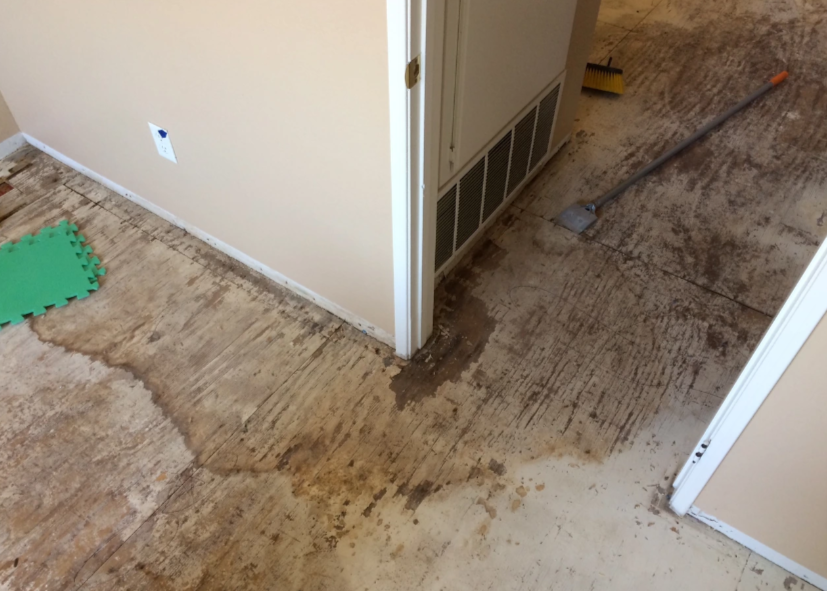Repairing Subfloors After a Flood
by siteadmin

If you're a property owner dealing with flood damage to your subflooring, you know the stress and worry such repairs can cause. You’re likely overwhelmed by the range of questions that arise as soon as flooding occurs: How much will it cost? Will I have to replace my entire floor system? What is the best repair process for flood damaged subfloors? The good news is there are solutions available that enable homeowners to restore these vital structural elements to their original condition at minimal costs. In this blog post, we'll explore some proactive strategies involved in restoring subflooring following flood damage and arm you with insight on how best to approach this situation from start to finish.
Understanding Subfloor Damage from Flooding
Subfloor damage caused by flooding can be a complex issue to understand. It's important to recognize the signs of damage and act quickly to prevent further harm. When a flood occurs, water can seep through the flooring and into the subfloor, causing severe damage. Signs of subfloor damage may include buckling or warping of floors, a foul odor, or visible mold growth. If you suspect subfloor damage, it's crucial to have a professional inspect the area as soon as possible. Ignoring the issue can lead to more severe problems down the line, such as weakened floorboards or even structural damage to your home. By understanding subfloor damage and taking prompt action, you can safeguard your home against the effects of flooding.
Preparing the Subfloor for Restoration Repairs
Before starting any restoration repairs on your floor, it's essential to ensure that the subfloor is properly prepared. The subfloor is the layer of material between the main floor and the joists, and it acts as a foundation for the flooring above. If the subfloor is damaged or uneven, it can lead to further problems down the line. To prepare the subfloor for repairs, first, remove any old flooring material and check for any signs of damage or wear. If necessary, replace any damaged or rotten sections, and ensure the surface is clean and free of debris. Consider using a level to check for areas that require added support or reinforcement. Taking the time to properly prepare the subfloor will ensure a smooth and even foundation for your flooring restoration project.
Installing a Vapor Barrier to Prevent Future Damage
If you've ever dealt with moisture problems in your home, you understand how troublesome they can be. Water damage can result in mold growth, structural issues, and a whole host of other issues. One of the most effective ways to prevent future damage is to install a vapor barrier. A vapor barrier is a plastic sheeting that is placed over insulation, on the warm side of the wall. It helps to prevent moisture from turning into condensation and causing damage. By taking the time to install a vapor barrier, you can save yourself from costly repairs down the road. It's a relatively simple process, but it's one that can make a big difference in the long run.
Re-installing and Replacing Damaged Subflooring
Whether you are a seasoned DIY enthusiast or a first-time homeowner, tackling a subflooring project can seem like a daunting task. Perhaps you have noticed that the flooring in your home has started to creak or sag in certain spots. In these cases, it is important to assess the subflooring and address any damage before laying down new flooring. If you are unsure where to start, fear not! Re-installing or replacing damaged subflooring is a manageable project with the right tools and some basic know-how. By following a few simple steps and taking precautions to ensure safety, you can successfully complete this project and enjoy a sturdy, level floor for years to come.
Finishing the Repair with Caulking and Adhesive
When it comes to finishing up a repair job, caulking and adhesive can be your best friends. Not only do they seal up any gaps or cracks, ensuring a tight and secure finish, but they also provide an extra layer of protection against moisture and weather damage. It's important to choose the right type of caulking and adhesive for your specific project, as there are many different formulas and types available on the market. Be sure to read the labels carefully and follow the manufacturer's instructions for best results. With a little bit of know-how and the right products, you can finish your repair project with confidence and ease.
Tips & Tricks to Reduce Damage in the Future
As much as we may try to avoid it, accidents happen, and we often find ourselves dealing with damage. But fear not, there are some tips and tricks that can help us reduce the likelihood of damage occurring in the future. First and foremost, prevention is key. Regular maintenance checks and inspections can help discover and address potential issues before they turn into major problems. It's also important to use the proper tools and equipment for any task at hand, and to handle them with care. When accidents do happen, quick action is necessary to minimize any potential damage. Having a well-stocked emergency kit with cleaning supplies, materials, and spare parts can make all the difference. By following these simple tricks and taking proactive measures, we can ensure that our belongings and property remain in tip-top shape for years to come.
Overall, restoring damaged subflooring due to flooding requires a certain amount of skill and finesse. Taking the time to properly prepare the subfloor, installing a vapor barrier for protection against future damage, re-installing and replacing damaged subflooring and finally caulking and adhering adhesive to finish up the repair will help achieve the desired result. While it may seem overwhelming at first, having an understanding of what is involved in this process can help you feel more confident tackling your flood damage restoration project. Remember some key points such as allowing plenty of time for drying and creating walls with dam boards to keep water at bay in order to protect both your home and our planet are essential steps that should not be overlooked. Following these tips on flooding restoration repairs add value, protecting your finances and resources in the long run.
If you're a property owner dealing with flood damage to your subflooring, you know the stress and worry such repairs can cause. You’re likely overwhelmed by the range of questions that arise as soon as flooding occurs: How much will it cost? Will I have to replace my entire floor system? What is the best…
Recent Posts
- Precision Hardwood Flooring LLC Elevates the Standard of Hardwood Flooring in New Jersey
- Helena Flooring Pro’s Revolutionize Floor Installation and Renovation Services in Helena
- Santa Clarita Flooring Elite Installation Leads the Way in Premium Flooring Services
- Crafting the Future: A Deep Dive into Carpentry Excellence – Insights, Techniques, and the Art of Woodworking
- Crafting Dreams: A Journey into the World of Carpenters – Insights, Skills, and Passion
